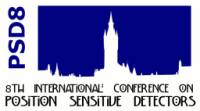Speaker
Mr
David Hall
Description
The technology behind the Electron-Multiplying Charge Coupled Device (EMCCD) was successfully exploited by e2v technologies in the late 1990s. Since then, many uses have been found for these low light level (L3) devices including surveillance and many scientific applications. The EMCCD increases or "multiplies" the charge signal by the phenomenon of impact ionisation (or avalanche multiplication) allowing the detection of low signal events of only a few photons. When coupled with a scintillator, this low light capability can be used to image photon flashes from individual X-ray interaction events. The combination of depth of interaction effects in the scintillator, shot noise on the signal and the multiplication noise factor lead to large variations in the profile of the detected signal from a constant energy X-ray source. This variation leads to poor spectral performance and can have adverse effects on the centering techniques used in photon-counting imagers. The concept of scale-space is similar in many ways to the Fourier or Wavelet Transforms. Automatic scale selection can be implemented through the scale-space transform as a method of fitting a known profile to the observed photon flash. The process is examined here in the context of the photon-counting EMCCD detector and the results obtained in both simulated and experimental data compared. Through the analysis of the fitting process and the results achieved, the implications on imaging performance and spectral resolution are discussed.
Author
Mr
David Hall

